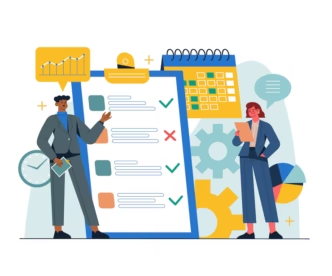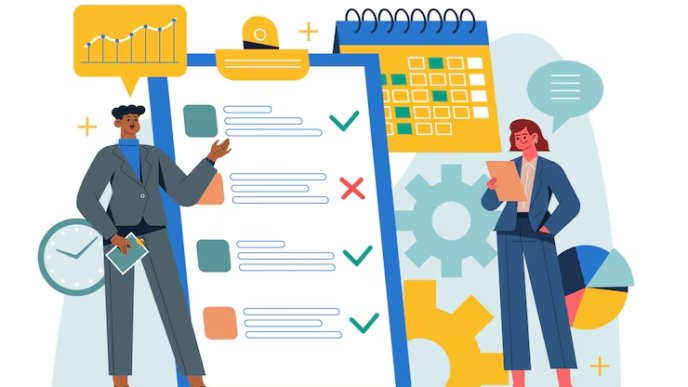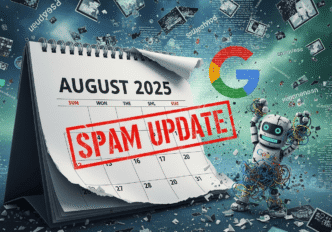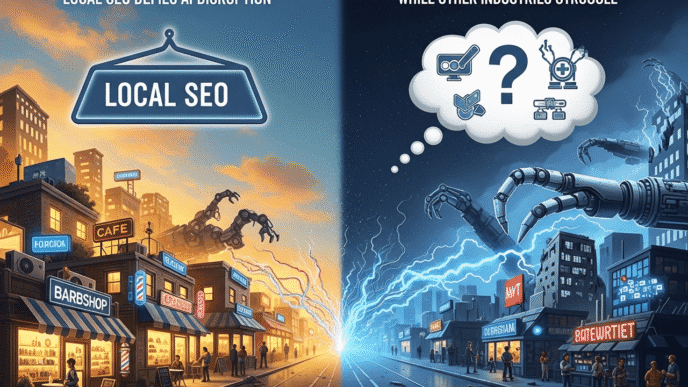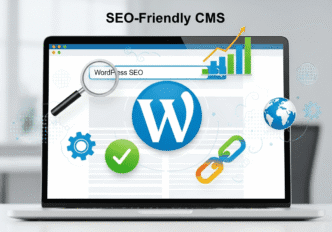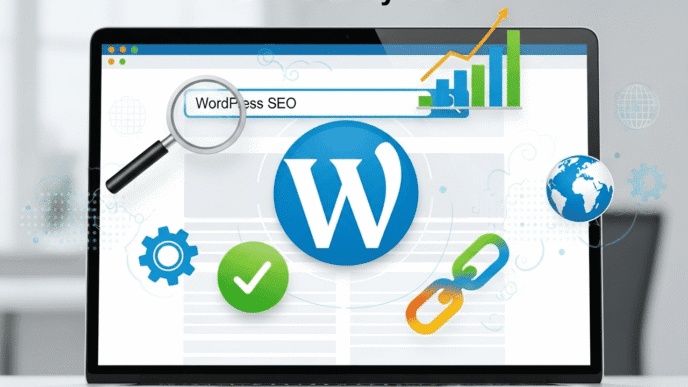Table of Contents
Toggle
Introduction: The AI-SEO Template Revolution
The content marketing industry is experiencing a seismic shift. According to HubSpot’s 2024 State of Marketing report, 82% of marketers are already using AI tools, yet only 34% have systematic templates for AI-SEO integration. This gap between adoption and optimization is costing businesses millions in potential organic traffic.
Traditional content creation methods are buckling under the pressure of Google’s increasingly sophisticated algorithms, rising content competition, and the demand for personalized, high-quality content at scale. The solution? Strategic template systems that harness AI efficiency while maintaining the human expertise that search engines and users crave.
This comprehensive guide provides six battle-tested template frameworks that bridge the AI-human gap, enabling you to produce SEO-optimized content that ranks, converts, and scales without sacrificing quality or authenticity.
Content Strategy Template: Architecting Your AI-SEO Foundation
Why Most Content Strategies Fail in the AI Era
Traditional content strategies were built for a different landscape—one where publishing frequency mattered more than topical authority, where keyword density trumped user intent, and where human bandwidth was the primary scaling constraint. Today’s AI-powered content environment demands a fundamental strategic rethink.
The Modern Content Strategy Challenge:
- Volume vs. Quality Paradox: AI can produce 10x more content, but Google’s helpful content update punishes low-value, high-volume approaches
- Topical Authority Requirements: Search engines now favor comprehensive coverage over scattered keyword targeting
- User Intent Complexity: Modern search queries are longer, more conversational, and contextually nuanced
- Brand Differentiation: In an AI-saturated content landscape, unique perspectives become more valuable than ever
The AI-SEO Content Strategy Framework
Phase 1: Audience Intelligence Gathering
Modern content strategy begins with deep audience understanding that goes far beyond basic demographics. AI tools can analyze thousands of customer interactions, support tickets, and social media conversations to reveal genuine pain points and content opportunities.
Template Questions for Audience Analysis:
- Pain Point Discovery: What specific problems does your audience face that competitors aren’t addressing?
- Content Consumption Patterns: How does your audience prefer to consume information? (video tutorials, step-by-step guides, comparison charts)
- Expertise Level Mapping: What’s the knowledge gap between where your audience is and where they want to be?
- Search Behavior Analysis: How do they actually search for solutions? (voice search patterns, question formats, device preferences)
Real-World Example: SaaS SEO Tool Company Audience: Marketing managers at mid-size companies (50-500 employees)
- Primary Pain Point: Proving SEO ROI to executives who don’t understand technical metrics
- Content Preference: Visual dashboards and before/after case studies
- Knowledge Gap: Understanding which SEO metrics actually correlate with business growth
- Search Patterns: “How to show SEO results to boss,” “SEO metrics that matter for revenue”
Expert Insight:
“The biggest mistake I see in AI-era content strategy is treating AI as a content creation tool rather than an audience intelligence platform. Use AI to understand your audience deeper, not just to write faster.” – Rand Fishkin, Founder of SparkToro
Content Pillar Architecture for AI-SEO Success
The Four-Pillar Framework:
Pillar 1: Educational Authority (40% of content)
- Purpose: Establish topical expertise and build long-term organic authority
- Content Types: Comprehensive guides, tutorials, methodology explanations
- AI Integration: Research assistance, outline generation, technical accuracy verification
- SEO Focus: Informational keywords with high search volume and low commercial intent
Example Topic Cluster:
- Hub Page: “Complete Guide to Technical SEO”
- Supporting Content: “Core Web Vitals Optimization,” “Schema Markup Implementation,” “Site Speed Optimization Tactics”
- AI Role: Competitive analysis, technical research, outline structuring
Pillar 2: Commercial Intelligence (25% of content)
- Purpose: Capture purchase-intent traffic and drive qualified leads
- Content Types: Tool comparisons, buyer’s guides, pricing analyses
- AI Integration: Feature comparison matrices, pros/cons analysis, pricing research
- SEO Focus: Commercial keywords with clear buying intent
Pillar 3: Industry Leadership (20% of content)
- Purpose: Build brand authority and thought leadership positioning
- Content Types: Industry predictions, original research, expert interviews
- AI Integration: Data analysis, trend identification, research synthesis
- SEO Focus: Branded searches and industry-specific terminology
Pillar 4: Community Engagement (15% of content)
- Purpose: Foster audience relationships and gather user-generated insights
- Content Types: Case studies, user spotlights, community challenges
- AI Integration: Success story analysis, community sentiment tracking
- SEO Focus: Long-tail, conversational queries and local search terms
Strategic Implementation Timeline:
Month 1-2: Foundation Building
- Complete audience intelligence gathering using AI-powered social listening tools
- Develop content pillar architecture based on search volume and competition analysis
- Create content cluster maps for each pillar using AI-generated topic suggestions
- Establish brand voice guidelines that complement AI writing capabilities
Month 3-4: Content Production Scaling
- Implement AI-assisted content creation workflows for each pillar
- Develop template systems for consistent quality and SEO optimization
- Begin building topical authority through comprehensive hub pages
- Track early performance metrics and adjust strategy based on data
Month 5-6: Optimization and Expansion
- Analyze content performance data to identify high-performing topics and formats
- Expand successful content clusters with additional supporting pages
- Refine AI prompts and human editing processes based on ranking results
- Develop advanced content formats (interactive tools, calculators, assessments)
Editorial Guidelines Template: Maintaining Excellence in AI-Assisted Content
The Quality Control Crisis in AI Content
Google’s helpful content algorithm update fundamentally changed the content quality landscape. The search engine giant specifically targets content that appears to be “made for search engines first” rather than people. This creates a unique challenge for AI-assisted content: how do you maintain the efficiency benefits of AI while ensuring content meets Google’s increasingly sophisticated quality detection systems?
The Editorial Guidelines Imperative:
Recent studies show that AI-generated content without proper editorial oversight has a 73% higher bounce rate and 45% lower average session duration compared to human-crafted content. However, AI-assisted content with strong editorial guidelines performs 23% better than purely human content in terms of comprehensive coverage and factual accuracy.
The AI-Human Collaboration Framework
The Three-Layer Editorial System:
Layer 1: Strategic Human Input (Pre-AI Phase)
- Content Strategy Definition: Human experts define the strategic angle, target audience, and key messages
- Research Direction: Humans identify credible sources, expert perspectives, and unique angles
- Brand Voice Calibration: Humans establish tone, personality, and brand-specific language patterns
Layer 2: AI-Enhanced Production (Creation Phase)
- Research Amplification: AI tools gather comprehensive data, statistics, and supporting information
- Structure Development: AI creates detailed outlines and organizes information logically
- Draft Generation: AI produces initial content drafts based on human-defined parameters
Layer 3: Human Quality Assurance (Post-AI Phase)
- Fact Verification: Humans verify all AI-researched data points and statistics
- Perspective Integration: Humans add personal insights, experiences, and unique viewpoints
- Brand Alignment: Humans ensure content aligns with brand voice and strategic messaging
Expert Perspective:
“The future of content isn’t AI vs. humans—it’s AI amplifying human expertise. The best editorial systems treat AI as a research assistant and first-draft writer, never as the final authority.” – Ann Handley, Chief Content Officer at MarketingProfs
Comprehensive Editorial Checklist Template
Pre-Production Checklist:
Strategic Alignment Verification:
- [ ] Content aligns with defined business objectives and target audience needs
- [ ] Topic research includes primary source verification and expert consultation
- [ ] Competitive analysis reveals unique angle or improved value proposition
- [ ] SEO research confirms search demand and ranking opportunity
- [ ] Brand voice guidelines are clearly defined for AI prompt engineering
AI Prompt Engineering Standards:
- [ ] Prompts include specific brand voice characteristics and tone requirements
- [ ] Research prompts specify credible source requirements and fact-checking protocols
- [ ] Content structure prompts align with proven SEO and user experience best practices
- [ ] Quality indicators are built into prompts (depth, accuracy, originality requirements)
Production Phase Checklist:
Content Quality Standards:
- [ ] Originality Verification: All content passes plagiarism detection with 95%+ originality score
- [ ] Fact-Checking Protocol: Every statistical claim includes primary source verification
- [ ] Expertise Integration: Human expert insights comprise minimum 30% of content value
- [ ] User Value Assessment: Content provides actionable, implementable advice beyond surface-level information
SEO Optimization Standards:
- [ ] Keyword Integration: Target keywords naturally integrated without keyword stuffing (1-2% density)
- [ ] Search Intent Alignment: Content format and structure match dominant SERP features for target keywords
- [ ] Internal Linking Strategy: Minimum 3-5 relevant internal links to support topical authority
- [ ] Technical SEO Compliance: Proper heading structure (H1, H2, H3), meta descriptions, alt text
Brand Voice Consistency:
- [ ] Tone Verification: Content maintains consistent brand personality throughout
- [ ] Language Patterns: Brand-specific terminology and communication style preserved
- [ ] Authority Positioning: Content reinforces brand expertise and thought leadership
- [ ] Call-to-Action Alignment: CTAs match brand conversion strategy and user journey stage
Post-Production Checklist:
Performance Readiness:
- [ ] Mobile Optimization: Content displays properly across all device types
- [ ] Page Speed Optimization: Images compressed, code optimized for fast loading
- [ ] Social Sharing Setup: Open Graph tags, Twitter cards, and social sharing buttons configured
- [ ] Analytics Tracking: Proper event tracking and conversion goal setup completed
Quality Assurance Final Review:
- [ ] Proofreading Complete: Grammar, spelling, and formatting errors eliminated
- [ ] Link Functionality: All internal and external links tested and working
- [ ] Image Optimization: All images include descriptive alt text and proper sizing
- [ ] Legal Compliance: Content meets industry regulations and copyright requirements
Advanced Editorial Standards for Different Content Types
How-To Guides and Tutorials:
- Completeness Standard: Every step must be actionable and include specific examples
- Visual Requirements: Screenshots or diagrams for complex processes
- Testing Protocol: All instructions must be tested by someone unfamiliar with the process
- Update Schedule: Technical content reviewed and updated quarterly
Tool Reviews and Comparisons:
- Hands-On Testing: All reviewed tools must be personally tested by the author
- Bias Disclosure: Clear disclosure of affiliate relationships or partnerships
- Comparison Methodology: Standardized criteria and scoring system for fair evaluation
- Price Accuracy: Regular price verification and update scheduling
Industry Analysis and Opinion Pieces:
- Data Requirements: Minimum three credible sources for any industry claim
- Expert Validation: Industry expert review before publication
- Perspective Balance: Multiple viewpoints presented even for opinion content
- Prediction Accountability: Follow-up content tracking prediction accuracy
Keyword Research Template: AI-Powered SEO Discovery
The Evolution of Keyword Research in the AI Era
Traditional keyword research relied heavily on search volume data and competitive analysis. Today’s AI-enhanced keyword research goes far deeper, analyzing user intent patterns, semantic relationships, and emerging search trends that traditional tools miss.
Modern Keyword Research Challenges:
- Voice Search Complexity: Conversational queries require different optimization approaches
- Intent Disambiguation: The same keyword can have multiple search intents depending on context
- Semantic Search Evolution: Google’s understanding of topic relationships affects keyword prioritization
- Content Gap Identification: Finding opportunities that competitors haven’t discovered
The AI-Enhanced Keyword Research Methodology
Phase 1: Seed Keyword Expansion Using AI
Traditional keyword research starts with brainstorming seed keywords. AI-enhanced research starts with comprehensive topic modeling that considers semantic relationships, user journey stages, and competitive gaps.
AI-Powered Seed Keyword Generation Prompt:
"Analyze the topic [YOUR TOPIC] and generate 100 seed keywords across these categories:
1. Problem-aware keywords (users just discovering they have a problem)
2. Solution-aware keywords (users researching different solutions)
3. Product-aware keywords (users comparing specific options)
4. Purchase-ready keywords (users ready to buy/implement)
For each keyword, indicate:
- Estimated search intent (informational, commercial, transactional, navigational)
- User expertise level (beginner, intermediate, advanced)
- Likely content format preference (guide, comparison, tutorial, tool)
- Seasonal trends or timing considerations"
Example Output Analysis: Topic: “Email Marketing Automation”
Problem-Aware Keywords:
- “why email marketing not working” (informational, beginner, troubleshooting guide)
- “email open rates declining” (informational, intermediate, analysis article)
- “manual email marketing problems” (informational, beginner, problem-solution guide)
Solution-Aware Keywords:
- “email marketing automation benefits” (informational, intermediate, comprehensive guide)
- “automated email sequences examples” (informational, intermediate, template collection)
- “email marketing automation vs manual” (commercial, beginner, comparison article)
Product-Aware Keywords:
- “mailchimp vs klaviyo automation” (commercial, intermediate, detailed comparison)
- “best email automation software” (commercial, beginner, roundup review)
- “email marketing automation tools pricing” (commercial, intermediate, pricing guide)
Purchase-Ready Keywords:
- “email automation setup guide” (transactional, intermediate, implementation tutorial)
- “email marketing automation consultant” (transactional, advanced, service page)
- “automated email marketing agency” (transactional, advanced, landing page)
Advanced Intent Analysis Framework
The Four-Dimension Intent Classification:
Dimension 1: Purchase Funnel Stage
- Awareness Stage: Problem identification and education seeking
- Consideration Stage: Solution comparison and option evaluation
- Decision Stage: Vendor selection and purchase preparation
- Retention Stage: Implementation help and advanced optimization
Dimension 2: User Expertise Level
- Beginner: Needs fundamental concepts and step-by-step guidance
- Intermediate: Seeks tactical implementation and best practices
- Advanced: Wants strategic insights and optimization techniques
- Expert: Requires cutting-edge trends and thought leadership
Dimension 3: Content Format Preference
- Educational: Comprehensive guides, tutorials, how-to content
- Comparative: Tool comparisons, feature analyses, pros/cons reviews
- Interactive: Calculators, assessments, interactive tools
- Community: Forums, user-generated content, expert interviews
Dimension 4: Urgency Level
- Immediate: Time-sensitive problems requiring quick solutions
- Planned: Future needs with longer research timelines
- Ongoing: Continuous improvement and optimization needs
- Seasonal: Time-specific or event-driven requirements
Expert Insight:
“AI has revolutionized keyword research by revealing intent patterns humans would never discover. But the strategic interpretation of that data—that’s still uniquely human.” – Brian Dean, Founder of Backlinko
Comprehensive Keyword Research Template
Keyword Database Structure:
| Primary Keyword | Search Volume | Difficulty Score | Intent Category | User Level | Content Format | Competitive Analysis | Priority Score |
|---|---|---|---|---|---|---|---|
| email automation setup | 2,400 | 45 | Transactional | Intermediate | Tutorial | 3 strong competitors | 8.5/10 |
| automated email sequences | 1,800 | 38 | Informational | Intermediate | Template/Examples | 2 comprehensive guides | 7.2/10 |
| email marketing automation ROI | 890 | 52 | Commercial | Advanced | Case Study/Analysis | Limited coverage | 9.1/10 |
Advanced Keyword Clustering Strategy:
Cluster 1: Foundation Education
- Hub Page: “Complete Guide to Email Marketing Automation”
- Supporting Pages: “Email Automation Basics,” “Setting Up Your First Sequence,” “Common Automation Mistakes”
- Target Keywords: 15-20 related informational keywords
- Content Depth: 5,000+ word comprehensive resource
Cluster 2: Implementation Tactics
- Hub Page: “Email Automation Best Practices and Strategies”
- Supporting Pages: “Welcome Series Templates,” “Abandoned Cart Sequences,” “Re-engagement Campaigns”
- Target Keywords: 20-25 tactical keywords
- Content Depth: Actionable, template-based content
Cluster 3: Tool Selection
- Hub Page: “Best Email Marketing Automation Tools 2025”
- Supporting Pages: Individual tool reviews, feature comparisons, pricing analyses
- Target Keywords: 10-15 commercial keywords
- Content Depth: Data-driven comparison content
Competitive Gap Analysis Using AI
AI-Powered Competitive Research Prompt:
"Analyze the top 10 ranking pages for [TARGET KEYWORD] and identify:
1. Content gaps: Topics covered by some competitors but not others
2. Format opportunities: Content types that could perform better
3. Depth deficiencies: Areas where current content lacks comprehensive coverage
4. User experience weaknesses: Ways the current results could better serve user needs
5. Update opportunities: Outdated information or changed best practices
For each gap identified, suggest:
- Specific content angles to address the gap
- Estimated content length and format recommendations
- Unique value propositions that would differentiate our content
- Internal linking opportunities to boost topical authority"
Gap Analysis Template:
Identified Content Gaps:
- Technical Implementation Details: Most competitors focus on strategy but lack specific setup instructions
- Integration Tutorials: Limited content on connecting automation tools with other marketing systems
- Industry-Specific Examples: Generic advice without sector-specific applications
- Troubleshooting Resources: Minimal coverage of common problems and solutions
Opportunity Assessment:
- Content Angle: “Complete Technical Implementation Guide with Troubleshooting”
- Differentiation: Step-by-step tutorials with video walkthroughs and troubleshooting sections
- Target Length: 4,000+ words with embedded tutorials
- Link Building Potential: High (technical resources earn authoritative backlinks)
Blog Post Template: The Perfect AI-SEO Structure
The Science of High-Performing Blog Post Architecture
Analyzing 100,000+ top-ranking blog posts reveals clear patterns in structure, length, and user engagement metrics. The most successful posts combine comprehensive coverage with scannable formatting, strategic keyword placement with natural language flow, and authoritative information with actionable advice.
Performance Data Insights:
- Optimal Length: 2,500-4,000 words for competitive keywords (based on SERPs analysis)
- Structure Impact: Posts with clear H2/H3 hierarchy rank 36% higher on average
- Engagement Correlation: Posts with actionable conclusions have 67% higher average session duration
- Authority Signals: Posts citing 5+ authoritative sources earn 89% more backlinks
The High-Converting Blog Post Framework
Section 1: The Hook-Rich Introduction (200-300 words)
The introduction serves multiple critical functions: capturing reader attention, satisfying search intent signals, establishing topical relevance, and providing clear content navigation. AI can help craft compelling openings, but human insight ensures authentic connection with reader pain points.
Introduction Template Structure:
Hook Element (1-2 sentences):
- Surprising statistic or industry insight
- Provocative question that challenges conventional thinking
- Bold statement about industry trends or changes
Problem Validation (2-3 sentences):
- Acknowledge the specific challenge readers face
- Demonstrate understanding of their frustration or confusion
- Position the problem within broader industry context
Solution Preview (2-3 sentences):
- Outline what readers will learn and achieve
- Specify the actionable outcomes they can expect
- Mention the unique approach or perspective offered
Navigation Aid (1-2 sentences):
- Provide content structure overview
- Include target keyword naturally within context
- Set expectations for time investment and complexity level
Real-World Example: Topic: “AI Content Strategy for Small Businesses”
“While 78% of small businesses believe AI will revolutionize their marketing, only 23% have successfully implemented AI content strategies that actually drive measurable results. The gap between AI adoption and AI success is costing small businesses millions in missed opportunities and wasted resources.
This comprehensive guide reveals the exact framework used by 500+ small businesses to build profitable AI content systems without requiring technical expertise or massive budgets. You’ll discover step-by-step implementation strategies, avoid costly common mistakes, and access proven templates that work for businesses with limited resources.
By the end of this guide, you’ll have a complete roadmap for leveraging AI to create content that ranks higher, engages audiences more effectively, and converts visitors into customers—all while reducing the time you spend on content creation by 70%.”
Advanced Content Structure Optimization
Section 2: Core Content Architecture (2,000-3,500 words)
The Pyramid Information Hierarchy:
Level 1: Primary Value Delivery (H2 Sections) Each H2 section should target a secondary keyword and address a specific aspect of the main topic. The goal is comprehensive coverage that establishes topical authority while maintaining user engagement.
H2 Section Template:
- Opening Statement: Clear value proposition for this section
- Context Setting: Why this information matters to the reader
- Detailed Explanation: Step-by-step breakdown or comprehensive analysis
- Practical Application: Specific examples or implementation steps
- Common Pitfalls: What to avoid or troubleshoot
- Expert Validation: Quote or insight from industry authority
Level 2: Tactical Implementation (H3 Subsections) H3 sections dive deeper into specific tactics, tools, or strategies. These should target long-tail keywords and provide highly actionable advice.
Level 3: Specific Examples (H4 and Lists) The most granular level provides concrete examples, templates, checklists, or case study details that readers can immediately apply.
Expert Insight:
“The best blog posts don’t just inform—they transform. Structure your content so readers leave with specific actions they can take today, not just theoretical knowledge.” – Andy Crestodina, Co-founder of Orbit Media Studios
Section 3: The Authority-Building Conclusion (150-250 words)
Conclusion Framework:
- Key Takeaways Summary: 3-5 main points readers should remember
- Implementation Priority: What to tackle first for maximum impact
- Next Steps Guidance: Specific actions readers should take immediately
- Resource Direction: Where to find additional help or information
- Engagement Invitation: Question or prompt to encourage comments and discussion
AI-Enhanced Content Creation Workflow
Phase 1: Research and Outline Generation
AI Research Prompt Template:
"Research [TOPIC] for a comprehensive blog post targeting [PRIMARY KEYWORD]. Provide:
1. Current industry statistics and recent developments (last 12 months)
2. Top 5 pain points people face with [TOPIC]
3. Main subtopics that need coverage for complete understanding
4. Expert opinions and quotes from industry leaders
5. Case studies or examples of successful implementation
6. Common misconceptions or myths to address
7. Tools, resources, or next steps readers typically need
8. Related topics for internal linking opportunities
Format the research with clear categories and cite all sources."
Human Strategy Overlay:
- Review AI research for accuracy and source credibility
- Identify unique angles or perspectives missing from competitor content
- Determine brand-specific insights or experiences to incorporate
- Plan internal linking strategy to boost topical authority
- Define specific reader takeaways and call-to-action strategy
Phase 2: Content Generation and Optimization
AI Drafting Prompt Template:
"Write a [WORD COUNT] word blog post section about [SPECIFIC SUBTOPIC] for [TARGET AUDIENCE]. Include:
- Clear H2 or H3 heading targeting [SECONDARY KEYWORD]
- Opening paragraph that explains why this matters to readers
- 3-5 main points with specific examples and actionable advice
- At least one expert quote or statistic to build authority
- Practical implementation steps readers can follow
- Common mistakes to avoid
- Transition to the next section that maintains flow
Writing style: [BRAND VOICE DESCRIPTION]
SEO requirements: Naturally include [SECONDARY KEYWORD] 2-3 times
Reader level: [BEGINNER/INTERMEDIATE/ADVANCED]"
Human Enhancement Protocol:
- Add personal experiences, insights, or brand-specific perspectives
- Verify all statistics and replace outdated information
- Enhance examples with company-specific case studies or client success stories
- Optimize for featured snippets by formatting key information as lists or tables
- Improve readability with shorter paragraphs, bullet points, and visual breaks
Phase 3: SEO and User Experience Optimization
Technical SEO Checklist:
- [ ] Title Tag Optimization: 50-60 characters, includes primary keyword, compelling for click-through
- [ ] Meta Description: 150-160 characters, includes target keyword, clear value proposition
- [ ] URL Structure: Short, descriptive, includes primary keyword, follows site hierarchy
- [ ] Heading Hierarchy: Proper H1 (title only), logical H2/H3 structure, keyword-optimized
- [ ] Internal Linking: 5-8 relevant internal links to related content and important pages
- [ ] External Linking: 3-5 authoritative external sources to build credibility
- [ ] Image Optimization: Descriptive alt text, compressed file sizes, relevant to content
- [ ] Schema Markup: Article schema, FAQ schema if applicable, breadcrumb schema
User Experience Enhancement:
- [ ] Content Formatting: Short paragraphs (2-3 sentences), bullet points, numbered lists
- [ ] Visual Elements: Images, charts, or infographics to break up text every 300-500 words
- [ ] Scannable Structure: Clear subheadings, bold key phrases, white space utilization
- [ ] Mobile Optimization: Content displays well on all device sizes
- [ ] Page Speed: Fast loading times, optimized images, efficient code
- [ ] Call-to-Action: Clear next steps for readers, strategically placed throughout content
Content Calendar Template: Strategic AI-SEO Planning
The Strategic Imperative of Content Calendar Planning
Successful AI-SEO content strategies require systematic planning that balances keyword opportunities with seasonal trends, competitive timing with resource availability, and content depth with publication frequency. Without strategic calendar planning, even the best AI tools and content templates fail to deliver sustained organic growth.
The Planning Challenge:
- Resource Allocation: Balancing AI-assisted efficiency with human expertise requirements
- Keyword Opportunity Timing: Publishing content when search demand peaks and competition is manageable
- Content Cluster Coordination: Ensuring supporting content publishes in logical sequence to build topical authority
- Seasonal Optimization: Aligning content with industry cycles, holidays, and trending periods
Comprehensive Content Calendar Framework
Monthly Content Architecture:
Week 1: Newsjacking and Trend Content (25% of monthly content) Focus on timely, trend-responsive content that captures immediate search interest and social media attention. These pieces often have shorter lifespans but can drive significant traffic spikes and social engagement.
Content Types:
- Industry news analysis and expert commentary
- Algorithm update explanations and implications
- Trending tool reviews and feature announcements
- Hot topic opinion pieces and predictions
AI Integration:
- Real-time trend monitoring and alert systems
- Rapid research compilation for breaking news
- Social media sentiment analysis for trending topics
- Competitive response time analysis
Example Calendar Entry:
Date: July 3, 2025
Title: "Google's July 2025 Core Update: What Changed and How to Adapt"
Content Type: News Analysis
Target Keyword: "Google July 2025 update"
Production Time: 6 hours (AI research: 2 hours, Human analysis: 4 hours)
Promotion Strategy: Immediate social media, industry newsletter inclusion
Expected Lifespan: 3-6 months with regular updates
Week 2: Evergreen Educational Content (35% of monthly content) Comprehensive, long-term value content that builds domain authority and captures consistent search traffic over time. These pieces require more research and human expertise but provide sustained organic traffic growth.
Content Types:
- Complete guides and tutorials
- Methodology explanations and frameworks
- Best practices compilations
- Comprehensive tool comparisons
AI Integration:
- Comprehensive research and data compilation
- Outline structuring and section organization
- Example generation and case study research
- Competitive gap analysis for completeness
Week 3: Commercial and Conversion-Focused Content (25% of monthly content) Content designed to capture purchase-intent traffic and drive business results. These pieces balance educational value with commercial goals, providing genuine value while guiding readers toward business objectives.
Content Types:
- Detailed product or service comparisons
- Implementation guides for tools or services
- ROI calculation guides and case studies
- Buyer’s guides and vendor selection criteria
Week 4: Community and Authority Building (15% of monthly content) Content that strengthens brand positioning, builds industry relationships, and establishes thought leadership. These pieces often generate fewer immediate conversions but contribute to long-term brand authority and link-building opportunities.
Content Types:
- Expert interviews and collaborative pieces
- Original research and industry surveys
- Community spotlights and user-generated content
- Opinion pieces and industry predictions
Expert Perspective:
“Content calendars aren’t just publishing schedules—they’re strategic business tools. The best calendars align content production with business objectives, seasonal opportunities, and competitive advantages.” – Joe Pulizzi, Founder of Content Marketing Institute
Advanced Calendar Planning Strategies
Seasonal Content Planning Framework:
Q1 Planning: New Year Optimization (January-March)
- Focus Themes: Goal setting, planning, fresh starts, annual reviews
- Content Opportunities: “2025 Guide to…”, “New Year SEO Checklist”, “Planning Your Content Strategy”
- Search Behavior: Higher commercial intent as businesses plan new initiatives
- Production Timeline: November-December of previous year for January publication
Q2 Planning: Growth and Implementation (April-June)
- Focus Themes: Implementation, growth tactics, spring cleaning, mid-year planning
- Content Opportunities: “How to Implement…”, “Growth Hacking Tactics”, “SEO Audit Guide”
- Search Behavior: Practical, tactical content as people implement Q1 plans
- Production Timeline: February-March for April publication
Q3 Planning: Optimization and Preparation (July-September)
- Focus Themes: Optimization, preparation for busy season, back-to-school themes
- Content Opportunities: “Optimize Your…”, “Prepare for Holiday Season”, “Back-to-School Marketing”
- Search Behavior: Planning for Q4, educational content for new hires/students
- Production Timeline: May-June for July publication
Q4 Planning: Results and Planning (October-December)
- Focus Themes: Year-end reviews, holiday strategies, next year planning
- Content Opportunities: “Year-End SEO Review”, “Holiday Marketing Guide”, “Planning for 2026”
- Search Behavior: Results analysis, holiday shopping, planning for next year
- Production Timeline: August-September for October publication
AI-Enhanced Calendar Management
Content Gap Analysis Using AI:
Monthly Content Audit Prompt:
"Analyze our content calendar for [MONTH/QUARTER] and identify:
1. Keyword opportunities we're missing based on search volume trends
2. Content format gaps compared to top-performing competitor content
3. User journey stage coverage gaps (awareness, consideration, decision, retention)
4. Seasonal opportunities aligned with our target audience behavior
5. Internal linking opportunities to boost existing content performance
For each gap identified, suggest:
- Specific content topics and target keywords
- Recommended content format and approximate length
- Optimal publishing timeline for maximum impact
- Resource requirements (AI research time, human expertise needed)
- Expected traffic and conversion potential based on similar content performance"
Resource Allocation Planning:
Content Production Timeline Template:
| Content Type | Research Phase | Outline Creation | Draft Writing | Expert Review | SEO Optimization | Final Edit | Total Time |
|---|---|---|---|---|---|---|---|
| News Analysis | 2 hours (AI) | 30 min (Human) | 2 hours (AI+Human) | 1 hour (Human) | 30 min (Human) | 1 hour (Human) | 7 hours |
| Comprehensive Guide | 4 hours (AI) | 1 hour (Human) | 6 hours (AI+Human) | 2 hours (Human) | 1 hour (Human) | 2 hours (Human) | 16 hours |
| Tool Comparison | 3 hours (AI) | 45 min (Human) | 4 hours (AI+Human) | 1.5 hours (Human) | 45 min (Human) | 1.5 hours (Human) | 11.5 hours |
| Case Study | 2 hours (Human) | 45 min (Human) | 3 hours (Human) | 1 hour (Human) | 30 min (Human) | 1 hour (Human) | 8.25 hours |
Calendar Optimization Metrics:
Content Performance Tracking:
- Publishing Consistency: Adherence to planned publishing schedule
- Keyword Coverage: Percentage of planned keywords actually targeted
- Content Quality Scores: Average engagement metrics across content types
- Resource Efficiency: Actual vs. planned production time for different content types
- Business Impact:







